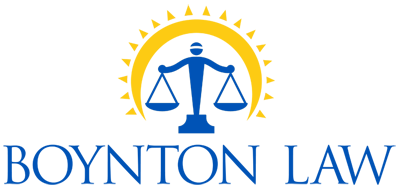Fair Use
Fair use provides a statutory defense in a copyright action. What fair use proposes is that it is important to protect the authors of copyrighted material’s work; however, there are certain activities that one can perform that should be excused from infringement. These activities include literary and social criticism, educational activities, and First Amendment activities such as new reporting. In addition, a general statutory guideline exist for the courts to use in determining whether a purported infringement is actually a fair use exception.
In 1984 the Supreme Court in Sony Corp. of America v. Universal City Studios, Inc., judicially applied the fair use doctrine. In Sony, Universal Studios claimed that Sony, who made the Betamax system of recording television programs, was contributory negligent, since persons using the Betamax system would likely infringe on the copyright of television programs copyrighted by Universal. The court weighed several factors in the statute. The first factor “the commercial or profit-making purpose” was weighed in favor of Sony. The court reasoned that most persons will use the equipment to time¬shift and the programs will be used mostly for private viewing.
For a web page designer, the commercial success of the internet has made it apparent that often when a web page developer makes a web page it is for a profit motive. However, consideration should be given to educational or charitable institutions making web pages.
The court then analyzed the fourth factor, “the effect of the use upon the potential market for or value of the copyrighted work”. The court noted “what is necessary is a showing by a certainty that future harm will result. In reaching its decision in Sony, the court found that no that no actual future harm was shown. The court wanted statistics and numbers on actual harm as it noted “harm from time shifting is speculative and, at best minimal and “no likelihood of harm was shown at trial, and plaintiffs admitted that there had been no actual harm to date. In an Internet scenario web page development is a very competitive field. A web page developer will try hard to get his/her site rated a 5% site by independent groups that look for sites on the web. By stealing someone’s graphics or copyrighted material then one may have an actual harm to their site.
The dissent, in Sony, immediately acknowledged that the majority did not address the second and third statutory factors, such as “the nature of the copyrighted work”. This factor acknowledges certain works such as news stories involve “more diligence than originality of inventiveness and they require less protections.” However, Sony’s projected use of the Betamax was for original shows so this factor should have been dispositive. In addition, the dissent noted that for the third statutory factor “the amount and substantiality of the portion used in relation to the copyrighted work as a whole;” was not analyzed by the majority. in addition, the dissent found that “it is undisputed that virtually all VTR owners record entire works. Thus, the dissent noted that the third statutory factor should be dispositive of a showing of non- fair use. Even with a strong dissent, the majority seemed to be willing to ignore certain factors from the statute because the use would be primarily for home and based on the “equitable rule of reason” balance, the time-shifting use was a fair use.
Although the Sony case was illustrative of a successful fair use argument, “such a powerful loophole in the copyright law is very tightly constrained”. Thus, a web page developer should be careful when copying whole works of material. However; with the current technology fair use may be an advantage because currently the average internet consumer cannot download or view whole movie clips, sound files, and other mediums. Thus, the use of short clips or taking very little of the work is feasible for the web page developer. However, the developer must consider the fair use factor for commercial purposes, as likely to cause the court to consider an infringement and not allow for fair use exception in the law.
Both in Playboy and Sega, the defense of fair use was unsuccessfully used. The court analyzed the statutory factors in Sega and found: (1) the ‘purpose of the use test’ was not met by MAPHIA because copying to save users the expense of the cost of buying the program, was not a legitimate purpose for fair use., (2) the nature of the copyrighted work was for entertainment and thus, no education or other consideration for the nature of the work existed. (3) the amount and substantiality of the portion used was the copy of the whole program, and, thus, the amount would not be substantial for a fair use defense; and (4) 45,000 bulletin boards existed, so the effect of the use upon the potential market for or the value of the copyrighted work would be substantial. Thus, the court in Sega denied fair use as a defense. In addition, in Playboy, the court considered the same factors as in Sega and no defense of fair use existed.
The greatest limit to claiming a fair use defense is that a web page developer is using the material for his commercial benefit. For the commercial benefit factor is “undoubtedly, the single most important element of fair use, since a proper application of fair use does not impair materially the marketability of the copied work,” considering courts, would likely find that taking graphics or text from other sites an infringement (depending on the text or the graphics copyright registration applicability). With the limits of fair use as a defense and the tight constraints of the courts to use it, somehow another area must be explored in order to understand why persons are infringing in the copyright world and almost nothing is being done.
Implied licenses
“A purported transfer of copyright ownership cannot occur unless it is in writing. When browsing the Internet no face to face interactions occur which would allow contractual transfers to take place, at the moment. Furthermore, many users are anonymous when entering into other systems. Assuming, no valid transfers occur would this mean that every person who takes an item from an internet network server is infringing on copyright by not having a writing? The answer would seem to be yes, but several courts suggested that in copyright law the non-exclusive license may “be granted orally, or implied from conduct and protect an otherwise infringer against liability.
In Oddo v. Ries, Oddo and a publisher Ries formed a partnership to write and publish a book. Oddo’s contribution to the book included previously written articles to be incorporated into the book. Due to problems in the partnership Ries gave a manuscript with the work by Oddo to another person to complete the manuscript . When Ries completed the manuscript, Oddo claimed that he had a copyright in the work he gave to the publication. The court held that there was an infringement in the articles given by Ries only because “Ries exceeded the scope of the partnership’s license when he used the articles in his own book.” However, the court did note that “by preparing a manuscript based on his preexisting articles as part of the partnership duties, (Oddo) had impliedly gave the partnership a license to use the articles insofar as they were incorporated in the manuscript.”. The court found that Ries had infringed on Oddo’s copyright only because he exceeded the scope of the license was Ries infringing on the copyright of Oddo. If Ries only had incorporated the contributions of Oddo in the book of the partnership, no infringement would have occurred.
In Effects, Cohen, used the footage created by Effects in his film. Effects claimed that the use of the footage amounted to copyright infringement. The court which noted that “The copyright owner of “a motion picture or other audiovisual work” has the exclusive rights to copy, distribute , or display the copyrighted work publicly. In addition, the court found that, “section 204 of the Copyright Act invalidates a purported transfer of ownership unless it is in writing. However, the court found that Cohen did not infringe on any copyright although he used the footage in his film and did not have a writing to transfer ownership. The court reasoned that a “non-exclusive license” may be “implied from conduct” and that ” Effect’s conduct created an implied license to use the footage”. The court used several factors to determine whether an implied license had been granted. These factors included that Effect’s had obtained a copyright registration for the footage was in the film and Effects delivered the film to Cohen, never warning him of the copyright infringement. The court, concluded that since this implied license, existed, Cohen was not infringing on Effects copyright but, Effects could still bring an action for breach of contract and other state court remedies.
The relevance of Effects and Oddo to Internet copyright is that the courts in both cases found an implied license because the copyrighted material was formed by a contractual, ‘face to face’ interactions. In Oddo a partnership existed and the factors of an implied license can be found in the factors, such as physically handing the material to the person and intending it to be used in a partnership work. In Effects, the footage to be used in the film was available by contractual agreements between the plaintiff and the defendant. However, copying someone’s file or graphics does not imply any conduct that would allow a developer to take it. If a developer was working on a page and incorporated graphics, texts, and other material from someone else’s page without that person’s permission, by not having a partnership or face-to face conduct of agreeing that the work will be used in a work, the implied license will not substantiate a defense to a copyright claim. The author is not suggesting that one must meet and have contact face to face for an implied license to exist. As technology is coming to the point where persons will be able to place digital signatures on documents on-line to conform to the validity of the contract. However, if a web page developer merely goes to someone else’s site with no indication of what he or she will do with the work there could be no implication that the person has by conduct impliedly licensed the developer to use their work just by putting it on the Internet.
Industry Standards Software Downloading Shareware
The question still remains how is that an Internet user can acquire another’s work just by downloading files. If no implied license occurs then what other alternatives exist to allow this conduct to continue.
The software industry has devised three major types of software that allow one to copy files and limit the infringement of the copier. The types of software include (1) shareware; (2) freeware; and (3) public domain software.
Shareware is software that is on a disk or can be downloaded and generally, gives the user a full version of the software. However, the user obtains shareware for a trial period, and once the trial period is over, the person must register the software and pay a fee to use the software.
Freeware is what the name implies it is free to copy, and use without paying a fee to use the software, after the initial trial period is over. It may be obtained or by downloading or disk.
Public domain software allows one to download the software or use a disk like freeware. However, a difference exists between freeware and public domain software. Freeware programs usually ask for a contribution, and the freeware author has the right to limit others from publicly distributing the copies, whereas the public domain software has no such limitations.
Most important, software companies have developed strategies which allow their software to be freely downloaded by a license, but on shareware and freeware software certain limitations exist on the implied licenses. However, if implied licenses exist on certain products, this does not explain why people are still copying other text, graphics, and software titles off the internet with few infringement claims occurring.




